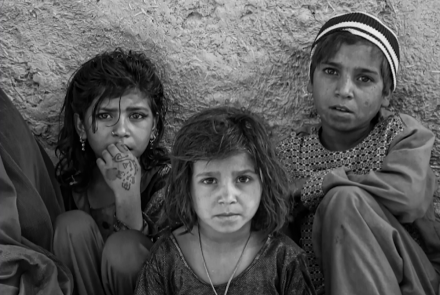The United Nations Office for the Coordination of Humanitarian Affairs said that Afghanistan’s economic crisis is widespread, with more than half of households experiencing an economic shock in the second half of 2022.
OCHA released a report titled “Afghanistan Humanitarian Response Plan: 2022 End-Year Monitoring Report of Financing, Achievements and Response Challenges (January - December 2022).”
“The response was enabled by a combination of new funding in 2022 ($3.2 billion) and funds carried over from 2021 ($542 million),” the report said.
OCHA also said that the outlook remains grim with climate forecasts indicating an imminent triple “dip La Niña phenomenon to extend the dry-spell / drought-like conditions for the third year in a row.”
The economy immediately went into free fall, with the disruption to markets, financial and trade mechanisms, the freezing of $9.5 billion in central bank reserves, loans, and the sudden suspension of direct development aid.
“Between January and December 2022, humanitarian partners have reached 26.1 million people with at least one form of assistance which includes 22.3 million people with food and livelihoods support; 13.3 million people with access to health care (consultations and treatment); 11 million people with water, sanitation and hygiene assistance; 6.2 million children and pregnant and lactating women with support to prevent and address acute malnutrition; 5.7 million people with protection assistance; 2 million people with emergency shelter and household items; and 554,400 children with access to education and education materials,” the report said.
This comes as the Ministry of Economy said that there is a need for infrastructural projects to provide job opportunities for the citizens.
However, some economists believe that old plans for the distribution of aid and high expenses of administrative affairs have affected the process of aid distribution.
“The administrative expenses of the international community have increased up to 65 percent and it is in fact not being provided in a reasonable manner,” said Sayed Masoud, an economist.
This comes as residents of Kabul voiced concerns about the lack of transparency in aid distribution.
“Those who deserve it, they should be helped economically. God will see it, those who deserve it, should be helped,” said Wahidullah, a resident of Kabul.
“There is no business. I worked 10 Afs from morning until now. No one has helped us,” said Sayed Nazeer, a resident of Kabul.
Earlier, the World Meteorological Organization also expressed concern over the economic crisis in Afghanistan and said that near to 19 million people are faced with food insecurity in the country.



Comment this post